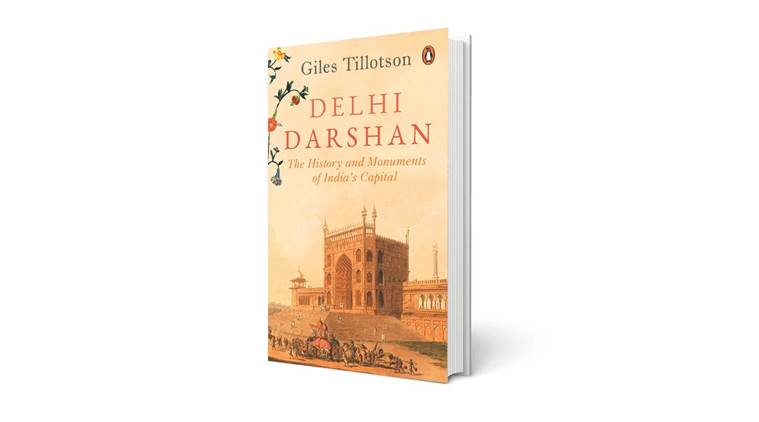
Delhi’s past informs its present and the present informs the past, as people encounter old sites through the lens of its recent use. Historian Giles Tillotson illustrates the point in his recent book, Delhi Darshan (Penguin, Rs 499), with India Gate, which is not just a war memorial, but also been a place to savour an ice cream on a hot summer evening or for the civil society to gather and protest a “miscarriage of justice”. Similarly, there is Jantar Mantar, the 18th century observatory, now synonymous as the place to stage political protests. The Lodi Garden not only enshrines a few tombs, but has become a spot popular for picnics, morning runs, even a lovers’ paradise. And the Red Fort makes headlines every year when it serves as the podium for the Indian prime ministers to make his Independence Day speech.
After writing Jaipur Nama in 2006 and Taj Mahal in 2008, the historian and writer has now completed his trilogy on what is popularly known as the Golden Triangle of India. “I hope that people who visit Delhi — or who live in it — will find the book helpful and entertaining. It is not an encyclopedia, or a work of reference. It is an essay to be read and enjoyed,” he says, in an email interview from the UK. It took him over a decade to return to Delhi to write Delhi Darshan. The past few years had him busy with projects as a consultant and curator for a slew of Indian museums.
In the book, Tillotson provides an account of Delhi’s built heritage. He traces the earliest settlements in Indraprastha, takes the readers through the legacy of the Mughals, and the ordered symmetries of Lutyen’s Delhi. He ends it with visits to towering skyscrapers of Gurgaon, through which he charts the urban landscape of the city. It also chronicles the national capital’s story, apart from social media blogs and curated walks that have made heritage interesting. “I admire a lot of recent work in conservation, though it is hard to assess its impact (of the surge of interest) at this stage,,” he says.
In the book, Tillotson also suggests routes that one can follow to explore the city’s monuments. While trips to Shahjahanabad, Humayun’s Tomb, Qutub Minar and Rajpath are to be prioritised, he also lists lesser-known sites around Kashmiri Gate, those on the way from Rajghat to Lotus Temple, and Hauz Khas. His pick for the most underrated monument in Delhi is Tughluqabad — “a stupendous fort”.
The writer has also edited the book Modern Indian Painting: Jane and Kito de Boer Collection (Mapin Publishing) that released in January this year. He is now writing Oriental Scenery: Aquatints of Indian scenes made by Thomas and William Daniell for DAG’s Drishyakala project at Red Fort.